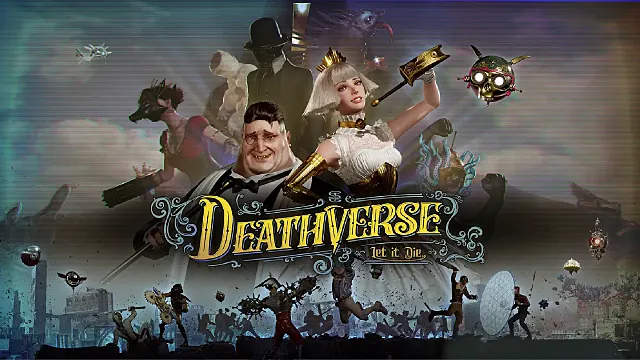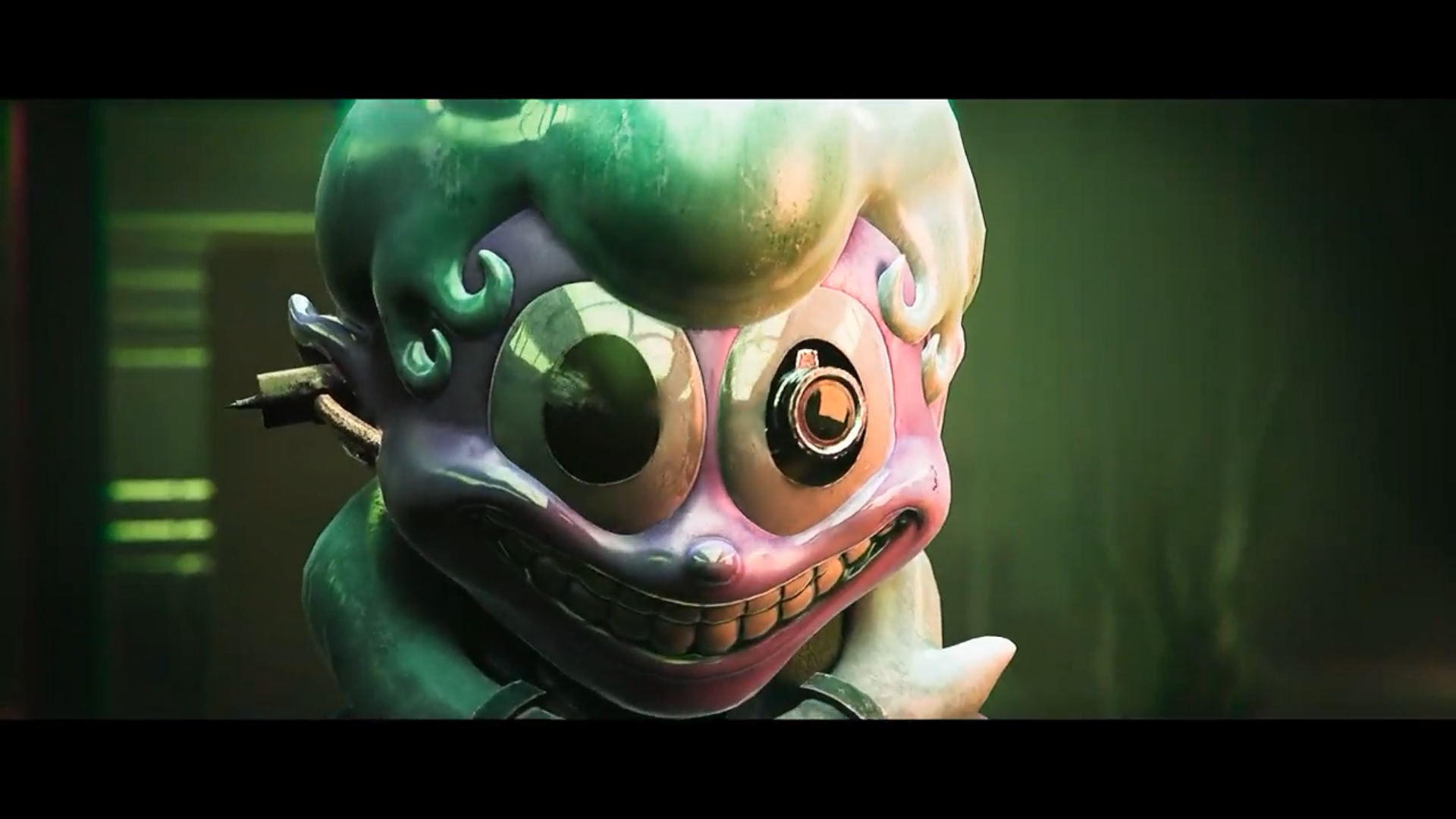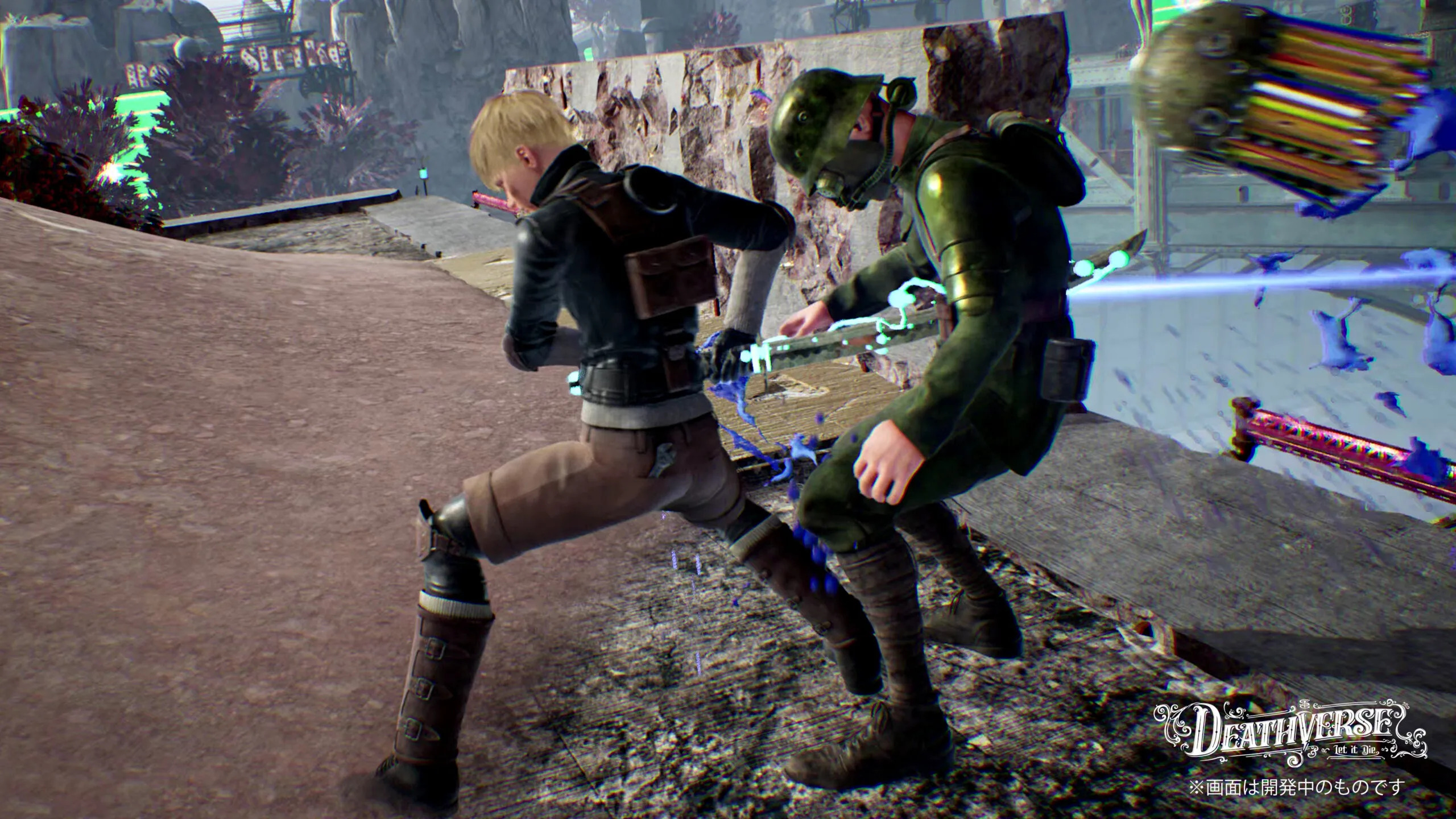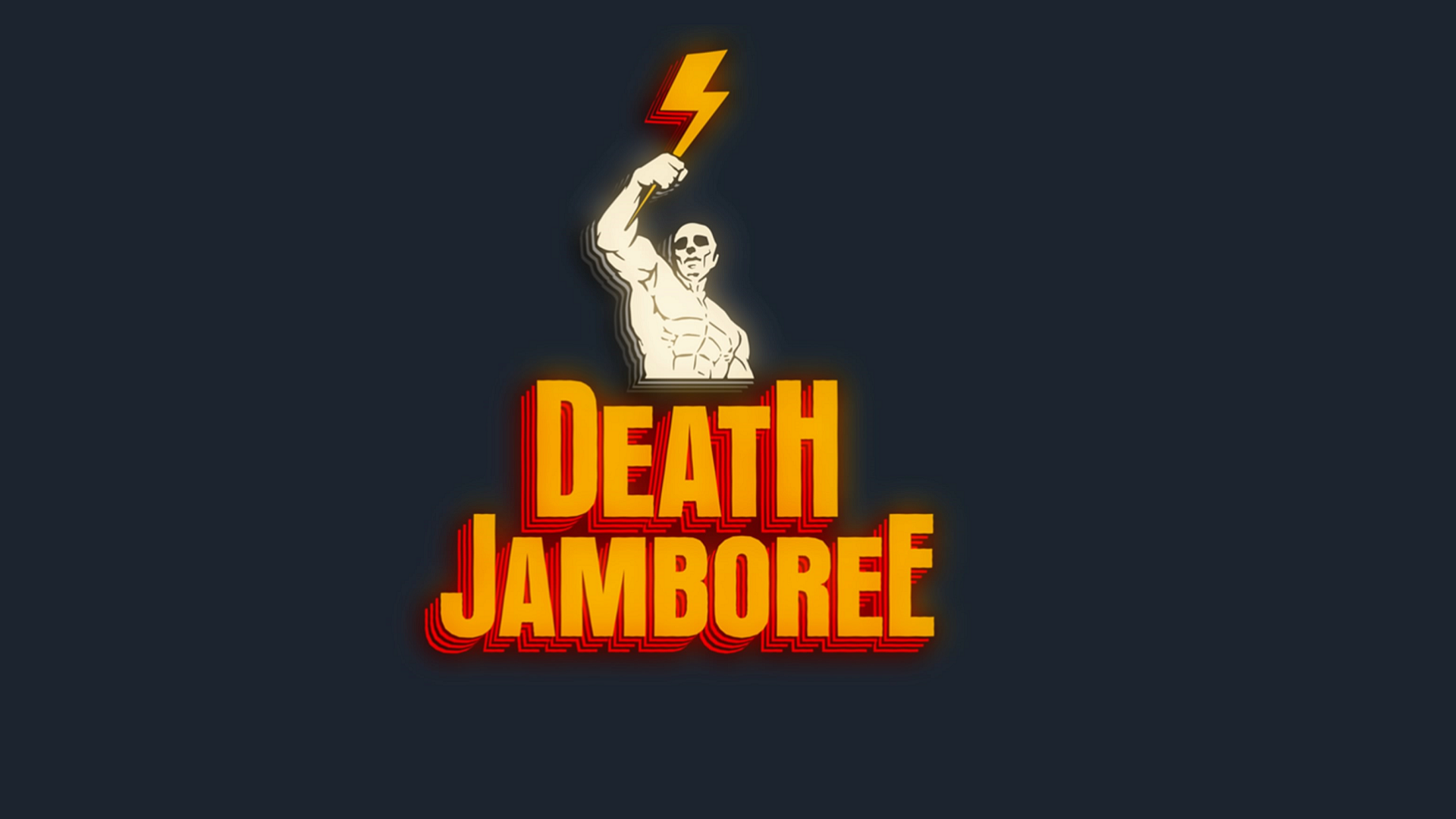From the off, you just know that Deathverse: Let It Die is going to be a trip. It opens with a huge, gaudy, swinging show-tune number, proclaiming the game’s intent as a funky Death Jamboree. It’s a banger and worth the storage space just to hear it. And the game could be too, for the most part, save a few pretty egregious missteps.
Supertrick’s Deathverse has a straightforward premise dressed in surreal clothing; on paper, it’s a fairly run-of-the-mill multiplayer battle royale in which 16 players fight to the death on a shrinking battlefield. Deathverse, though, is set in the wake of a cataclysmic event exacerbated by a playful grim reaper, detailed in the spiritual prequel Let It Die.
Now, hundreds of years in the future, humanity has fully embraced its weird side and is reveling in the launch of an ultraviolent reality show called Death Jamboree, in which 16 contestants – you guessed it – fight to the death on a shrinking battlefield.
This plays into the language around the game’s mechanics. You earn Good Points (GP) from the show’s audience by being entertaining (brutal and murderous, in other words), and GP is your main source of healing and stat boosting in-game. GP is the metric by which you’re scored in the Death Jamboree, and the more the audience likes you, the higher it goes, and up goes your health with it.
Starting Deathverse, you’re quickly thrown into the Crazy Violent Basic Training program, led by Uncle D2 – a small flying robot in the shape of a skull. He graciously takes you through the combat mechanics and introduces you to your very own small flying robot – the Wilson device. The Wilson device serves as your faithful companion and useful multi-tool in navigating this world; it’s your weapon, shield, scanner, and skills all rolled into one. And when the Wilson takes a hit (such as when an enemy breaks your shield), so too does your offensive capability.
The combat itself has certainly taken a few cues from the Souls franchise – all shoulder buttons to attack and what-have-you – which is easily forgotten as a relatively recent design choice. It does differ in a few key ways, though; there’s no locking on or parrying, and playing offensively almost all the time is actively encouraged here. Since your attacks generate GP and heal you, the result is an interesting tug-of-war dynamic. This means it’s never too late to win and that landing a few choice blows, even when you’re on your last legs, can quickly turn a fight around in your favor.
With the training out of the way, you’re free to jump into one of the game’s two modes – Ranked or Exhibition. Aside from the rankings system, they are fundamentally the same; both are set on Bonuriki island, a reasonably sized stage divided into seven zones, each with a distinct feel and layout.
The show’s hosts, Bryan Zemeckis and Queen B, will announce the arrival of you and your fellow players, and you’re in. It’s then time to put that brief tutorial to use and try to come out on top.
Matches play out in a familiar enough fashion. You spawn with a little breathing room, allowing you to grab a Sub-Skill (typically explosives, debuffs, or distraction techniques) and some charge from a Power Pod for your Main Skill. These are specific to the weapon you’ve chosen, and there are currently five categories with three variations of each, consisting of a machete, katana, hammer, mechanical arms, and a buzzsaw.
These weapons are unlocked by crafting, and they all feel great to play with, offering a wealth of options to suit your playstyle. The katana is fast, has a high damage output, and has some flashy Deathblows (special moves) in its repertoire. If you really want to wind people up, though, the buzzsaw gives you a lot of mobility and can be extremely difficult to interrupt.
There is a slight PvE element to the Death Jamboree, too, as small monsters known as cryptids roam the stage – easy pickings for some bonus GP and some crafting materials. The other AI enemy, the hunter, is a much more frightening affair, however. They are summoned by the hosts with the express purpose of ruining your day, and if you don’t turn tail and run at the first sight of them, they will succeed. The hunter is immortal and will tear a contestant to shreds with just a few attacks, though mercifully, they will retreat after a moment or two.
All this chaos plays out as the island’s contaminant, SPLithium (yes, that’s honestly what it’s called) rolls in, forcing the remaining players closer together until only one remains. While I did say that the comparison to Dark Souls’ combat only ran so deep, the whole feeling of playing reminds of a lighter-hearted version of the invasion system in those games. Players are out to stunt on you. I’ve even knocked someone clean off the stage when they thought they were safely harvesting materials – and this speaks to the game’s greatest strength; it is silly but a real joy to be in on a moment-to-moment basis.
And yes, there is jank – Deathverse is clearly a AA budget game at best. A particularly weird moment is when a match ends, and the winner is interviewed in silence by one of the hosts. Let’s hear from our champion, they say, and we hear nothing.
Despite all I like about the game, battle royales live and die by their social aspect, and Deathverse truly does itself no favors in this regard. As it stands, the only way to play with friends is by hosting a private room, a function that’s locked behind the highest tier Jamboree Pass (Deathverse’s battle pass equivalent) at around a $30 cost to the player.
There’s a small saving grace in that you don’t need to have this tier, or any in fact, of the Jamboree Pass to join a room, but envision the following scenario: four friends want to play together, and one buys the platinum Jamboree Pass. Said friend leaves after an hour. The remaining members of the group must now either go their separate ways, or one of them too must now cough up three hours’ worth of the average worker’s wage to keep going as a group. All of this for a feature that is free in literally every other example of the genre. A truly baffling aspect of this, too, is that established groups of friends will likely never even try the game for this exact reason.
One hopes that this will get walked back pretty quick-sharp if Deathverse wants to last out its roadmap – which it needs to because it’s feeling fairly bereft of content at launch, with just one map, one hunter, and five weapon types. And to be clear, I want the game to succeed – it’s got some interesting stuff in the pipeline, including a feature whereby random matches will be broadcast to the developer’s official Twitch channel in a kind of metagame recreation of Deathverse’s premise. But as it stands, it’s very hard to recommend to your friends.
Deathverse: Let It Die Review – The Bottom Line
Pros
- Genuinely fun to play.
- Short and snappy matches give it a real moreish, just-one-more-go quality.
- The whole vibe of the thing.
Cons
- Matchmaking with friends locked behind the most expensive battle pass.
- Lack of launch content.
- Virtually no cosmetic customization options for free players.
Deathverse is a game of two jarring, contradicting halves; the psychedelic presentation and anarchic spirit of this contender to the battle royale throne is coupled with some of the worst monetization in a game in recent memory. If you’re the sort of player who doesn’t care for the social aspect of multiplayer gaming, there’s a lot of fun to be had here – and it looks like it’ll only get better.
But as it stands, the content deficit and paywalled parties mean that as someone who values the moments of human interaction higher than most other facets of the genre, I won’t be taking this trip again anytime soon.
[Note: The free PlayStation 5 version of Deathverse: Let It Die was used for this review.]










Published: Oct 2, 2022 01:00 pm